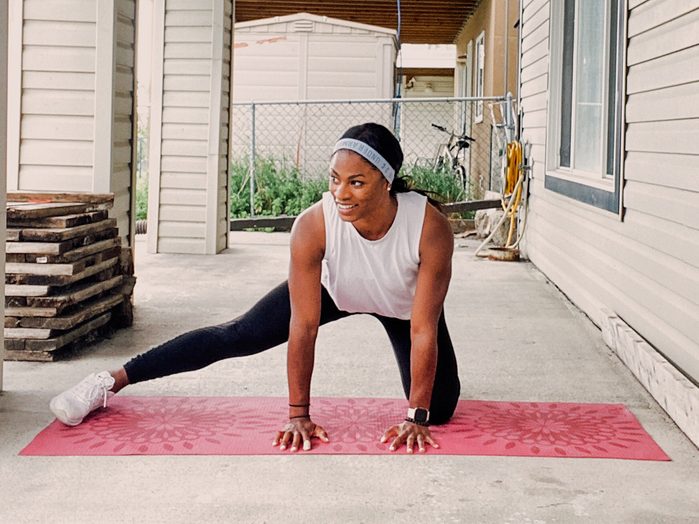
Stretch Your Way to Heart Health
A healthy diet and active lifestyle go a long way toward keeping our tickers in prime condition. And according to a paper recently published in the Journal of Physiology, we can now add regular leg stretching to the preventive measures for heart disease and diabetes.
The study followed a group of men and women who exhibited increased blood flow in their lower legs and upper arms, and reduced arterial stiffness, after passively stretching their legs for 12 weeks (a passive stretch uses an external force like gravity, a wall or a chair). That boon to heart health makes good sense to Whitney Dikoume, a Calgary-based strength coach and certified athletic therapist. She offers up three sets of complementary exercises and stretches that will not only increase your strength and flexibility but also target the muscles surrounding major artery groups.
(Related: 4 Expert Tips You Need to Know to Stretch Properly)
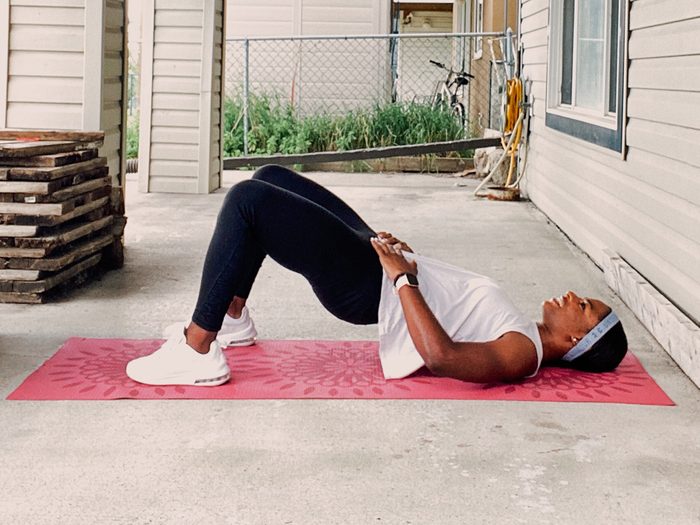
Glute and Quad Stretches: Move 1
Activate your glutes to help stretch and elongate the major muscles (quads and hip flexors) surrounding the femoral artery, which supplies blood to your lower body.
Glute bridges. Lie down on your back, arms at your sides. Squeeze your glute and abdominal muscles, and then lift your hips off the ground until knees, hips and shoulders are in a straight line. Hold for a few seconds and return to the starting position. Repeat.
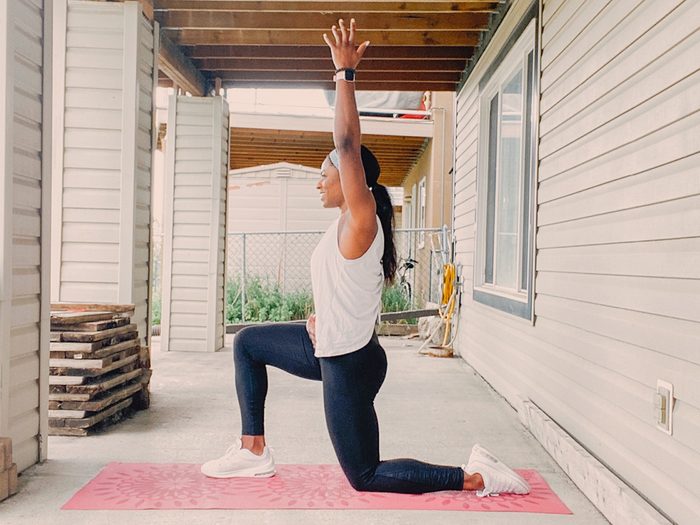
Glute and Quad Stretches: Move 2
Quad kneeling stretches. Start in a high lunge position, with your left foot forward. Drop your right knee to the floor and find your balance. Reach back with your right arm, and grab your ankle or toes. Hold the position steadily for 45 seconds. Switch legs.
(Related: 3 Simple Desk Stretches You Should Be Doing While Working From Home)
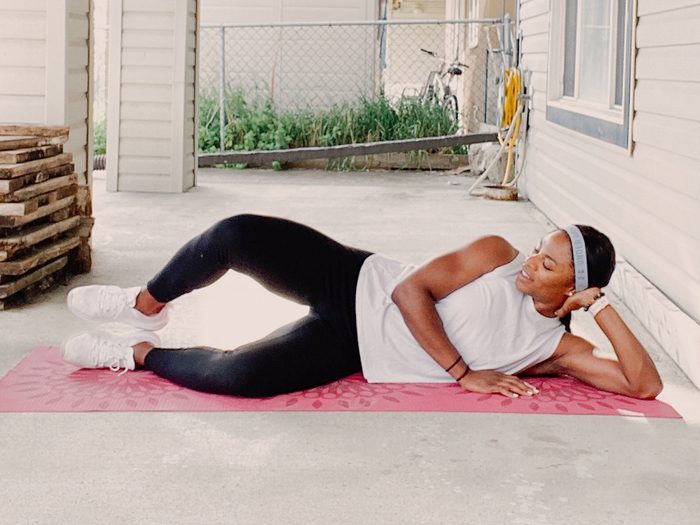
Groin Stretches: Move 1
If your groin is tight, then your femoral artery could be pinched. Counteract that with these hip-opening moves, which also address stiffness from sitting for long periods (hello, working from home).
Clamshells. Lie on your side, with legs stacked and knees bent at a 45-degree angle. Rest your head on your lower arm, and use your top arm to steady your frame. Be sure your hip bones are stacked on top of each other, so the top hip doesn’t rock backward. Pull your belly button in to help stabilize your spine and pelvis. Keep your feet touching and raise your upper knee as high as you can without shifting your hips or pelvis. Don’t move your lower leg off the floor. Pause, and then return your upper knee to the starting position on the ground. Do 20 reps on each side.

Groin Stretches: Move 2
Kneeling groin stretch. Kneel on the ground with feet pointed out to sides. Place forearms and hands on floor. Spread knees apart and gently lower hips. Hold stretch for at least 45 seconds.
(Related: Stretching For Stiffness—This Yoga Flow Will Loosen You Up)
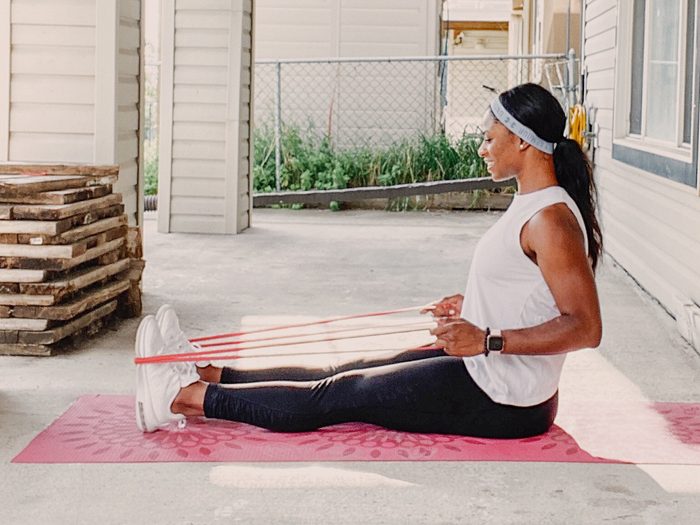
Upper Body Stretches: Move 1
These work the muscles in your arms, chest, shoulders and neck, and benefit the subclavian arteries, which travel beneath the collarbone, and the carotids, which supply blood to your brain.
Rowing exercises with a band. Sit on the ground with your back straight, legs extended out in front of you. Loop a long band around your feet and hold the ends in both hands, arms straight in front of you. On an exhale, squeeze your shoulder blades together and row the band toward your torso, bending your elbows to a 90-degree angle. Pause here for a moment, and then extend your arms again.
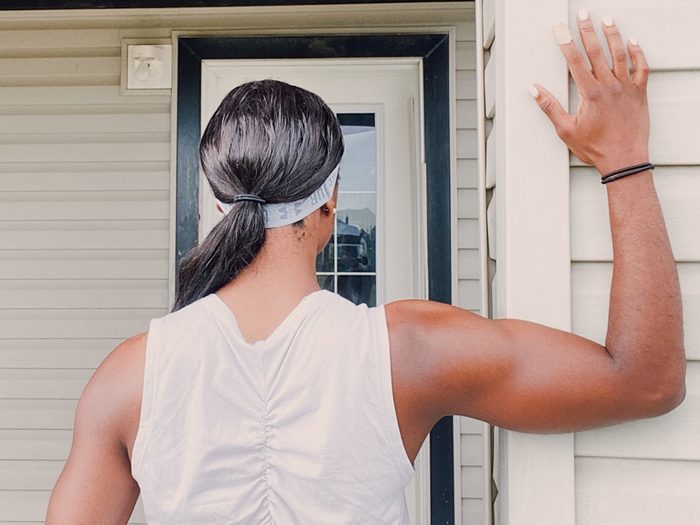
Upper Body Stretches: Move 2
Pectoral wall stretches. Stand upright beside a wall. Place your arm closest to the wall so that it’s slightly above horizontal, with your palm facing the wall. Rotate your torso away from the wall, while keeping your hand and arm firmly planted against the wall, stretching your pec on the side nearest the wall. Keep your shoulder back on the side closest to the wall, and don’t let it move as you rotate your torso forward. Switch and repeat.
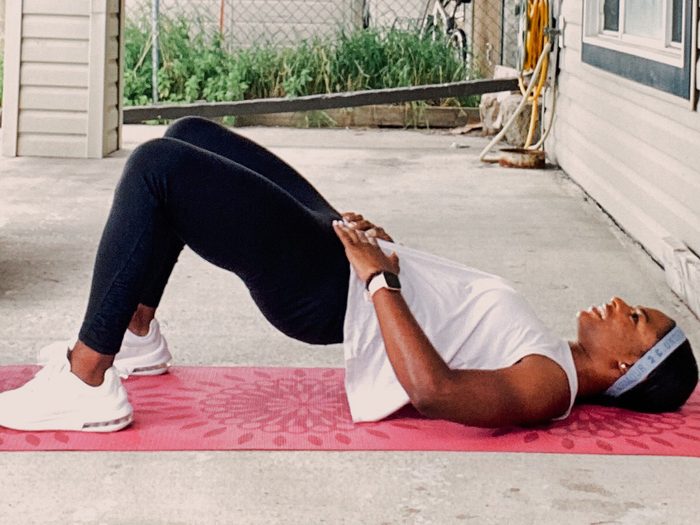
Pro Tips
You’ll get the most benefit from these static stretches after physical activity, so Dikoume suggests trying them post walk or run, or even before going to bed. She also recommends holding each stretch for 45 seconds to one minute. “The muscles need at least 10 seconds before they can detect a stretch is happening, so holding them for longer allows them to eventually relax into it.”
Finally, take slow, deep breaths as you stretch: “That activates our parasympathetic nervous system,” says Dikoume, “which causes our heart rate to go down and decreases our levels of stress hormones.”
Next: Why You Should Make Post-Workout Stretching a Priority
